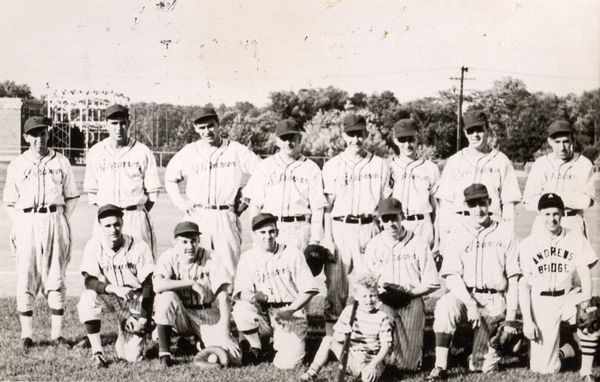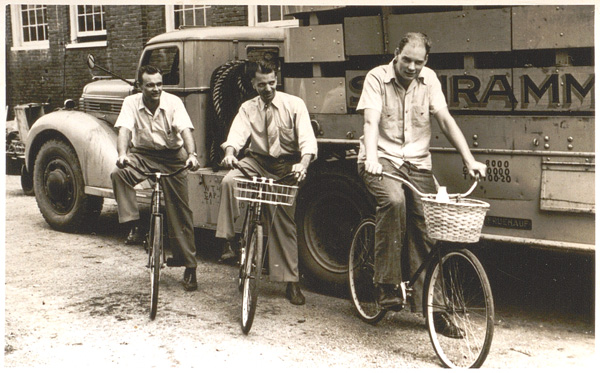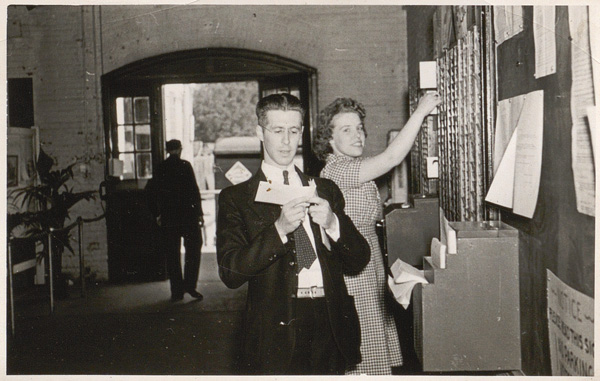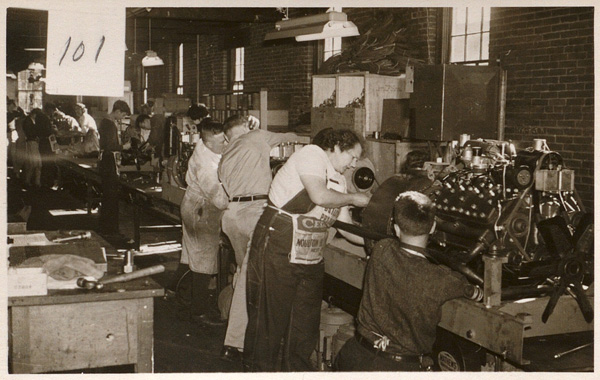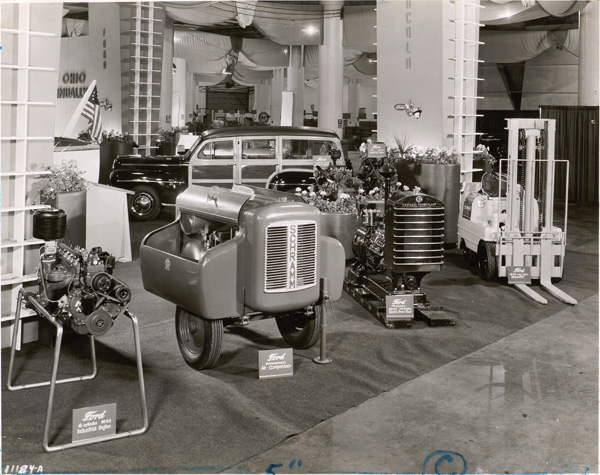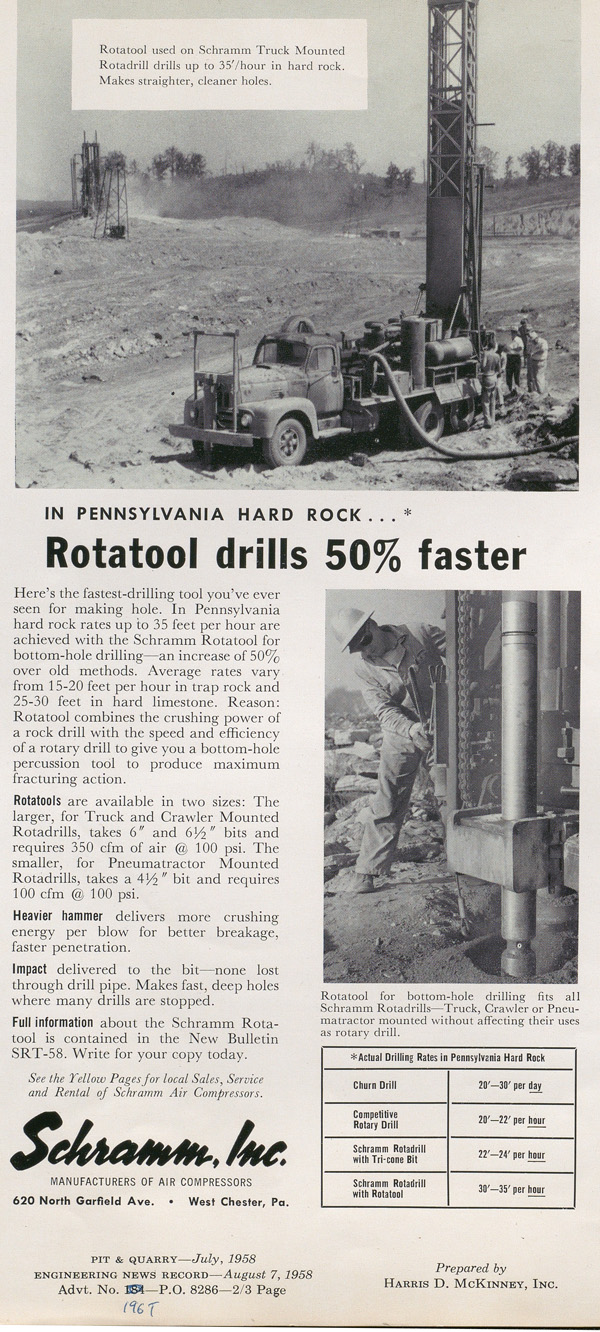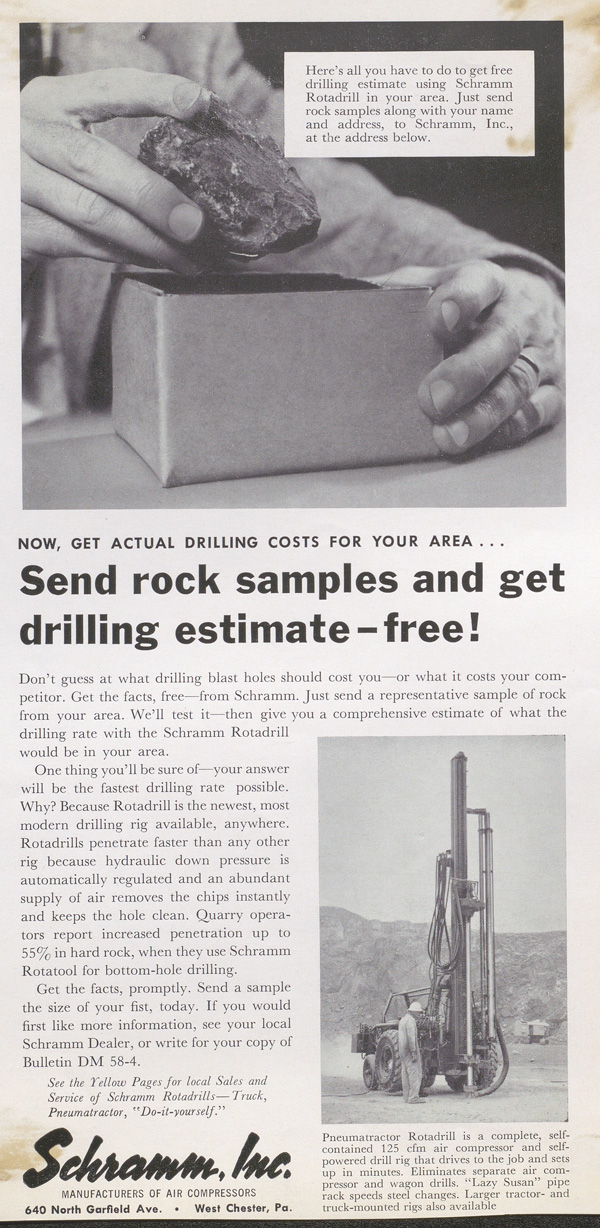Between 1940 and 1960, Schramm, Inc. experienced significant growth as a result of World War II and the postwar era’s evolving market demands. During the war, Schramm received military contracts to manufacture air compressors, generators, and welders for all service branches, leading to a dramatic increase in production. The company hired Katherine Facciolli, its first woman employee, for shop work and expanded its workforce, eventually including up to 70 women, to meet the urgent wartime orders. During the war the company surpassed all previous production levels. 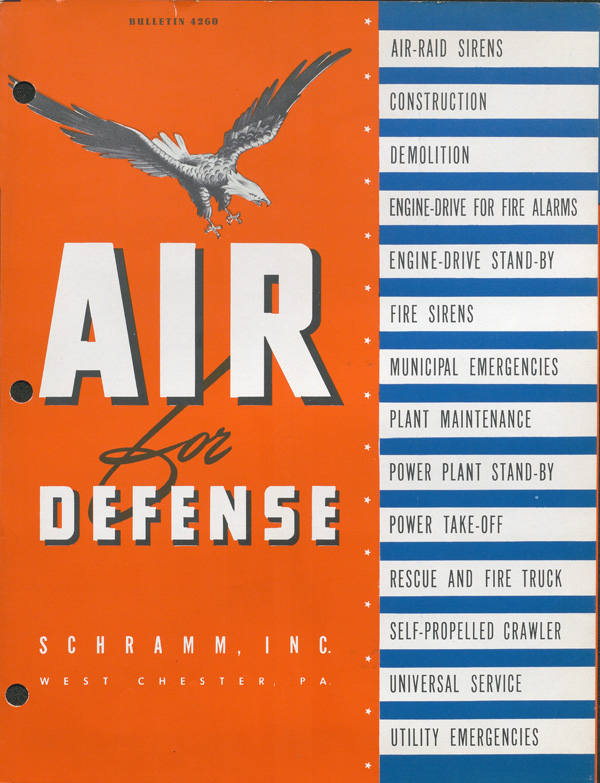
Photograph: 'Air for Defense,' advertising brochure for Schramm products, c.1943. See below for more photos.
In 1941, the company purchased Chestnut Knoll, a property adjacent to its headquarters in West Chester, a site that would become key for future expansion. It opened the company’s first research laboratory at the new site and later expanded the lab after the war. In 1943, it converted the mansion on the site to an employee restaurant. New manufacturing facilities were built on the site and existing ones were renovated.
After the war, Schramm continued to grow, opening new facilities and expanding its product lines. In 1946, it built a large warehouse and closed its temporary war production facilities in West Chester, Downingtown, and Wayne, Pennsylvania. Schramm celebrated its 50th anniversary in 1950 with an open house and opened branch offices in Los Angeles and San Francisco.
Schramm had grown before WWII by specializing in air compressors, but after WWII the company faced stiff competition from Ingersoll Rand, Worthington, Chicago Pneumatic, Joy and others. As competitors adopted less expensive designs for its portable air compressor products, Schramm sought niches in the market with specialized products and uses, like the Model 60 crawler air compressor, the Pneumatractor and then the Rotadrill.
In the early 1950s, Schramm enhanced the capabilities of the Pneumatractor, transforming it into a versatile machine that could do more than ever before. They expanded it into a complete product line, adding front-end loaders, backhoes, and other attachments that made it useful for both construction and drilling. These adaptable machines quickly became popular with small contractors, utility companies, and local governments looking for reliable, multi-purpose equipment.
At the same time, the oil and gas industry began using compressed air to bring drill cuttings to the surface. Seeing an opportunity, Schramm created a petroleum division and developed special air compressors to support this growing demand. When the oil and gas market cooled, Schramm didn’t let their work go to waste—these high-pressure air compressor designs later became the foundation for its Rotadrill products.
As the focus on petroleum air drilling declined, Schramm shifted gears and introduced its first rotary drilling rigs, called Rotadrills, in 1955. These rigs could be mounted on Pneumatractors, trucks, or caterpillar crawler tracks, making them highly adaptable. This marked a turning point for the company—by 1960, drilling rigs had overtaken air compressors as Schramm’s main product, driving both sales and profits.
Schramm rigs were particularly well-suited for the emerging "DTH" (down-the-hole) drilling method, where a pneumatic hammer at the bottom of the drill rod delivers powerful percussive force to the bit, allowing for much faster drilling. By the 1980s, Schramm had the leading DTH rigs on the market.
Beyond its innovations in equipment, Schramm was also investing in its people. By 1956, the company had introduced medical benefits, travel insurance, and improved pension plans for employees. Throughout the decade, it continued to expand benefits, adding more vacation time and sick leave. By 1959, Schramm had expanded its board of directors to nine members, reflecting its steady rise as a major player in the construction and drilling industries.
This era set the stage for a significant turning point in Schramm’s evolution, as it shifted from air compressors to drilling rigs and solidified its reputation for both innovation and employee-focused leadership.
Jump to: 1900-1920 | 1920-1940 | 1960-1980 | 1980-2000 | 21st Century
PHOTOGRAPHS : 1940 to 1960


